Cultural Properties of Ancient Nara
Representing Nara City, Todaiji Temple, Kohfukuji Temple, Kasugataisha Shrine, Kasugayama Primeval Forest,
Gangoji Temple, Yakushiji Temple, Toshodaiji Temple,
and the Former Site of Heijo Palace are UNESCO World Heritage sites registered as "Cultural Properties of Ancient Nara."
In 1998, they were inscribed on the World Heritage list, and 2023 marks the 25th anniversary of their registration.
To celebrate, there will be commemorative events and opportunities to purchase a combined admission ticket and special Goshuin stamps.
We invite you to visit Nara City during this special occasion.
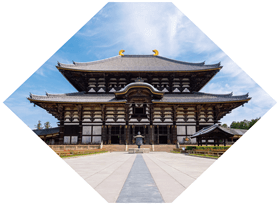
Todaiji Temple
Home of the iconic Great Buddha statue. Pass through the Nandaimon Gate to see the magnificent Great Buddha Hall, one of the world's largest wooden structures.
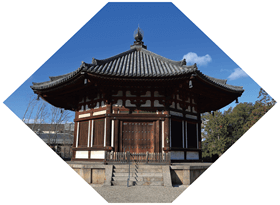
Kohfukuji Temple
The guardian temple of the Fujiwara clan, Kohfukuji has National treasure buildings including a five-storied pagoda, which conveys its majestic appearance to the present day.
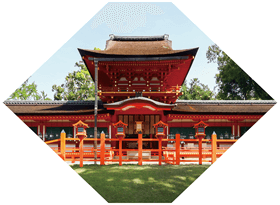
Kasugataisha Shrine
Founded in 768 at the foot of the sacred mountain of Mikasa. The legend that the main enshrined deity came on a white deer is the reason for deer in Nara Park being carefully protected as messengers of deity.
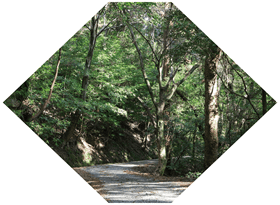
Kasugayama Primeval Forest
As the sacred mountain of Kasuga Grand Shrine,access, tree felling, and hunting have been prohibited for over 1000 years. As a result, a pristine forest has been preserved in its natural state.

Gangoji Temple
This temple has its roots in the first Buddhist temple in Asuka area, Japan. It was relocated here when Heijokyo(Nara) became the new capital.
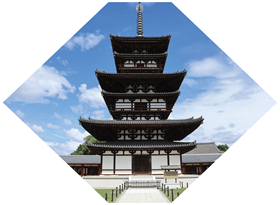
Yakushiji Temple
Established in the late 7th century, this temple has suffered multiple fire but has since been rebuilt. The East Pagoda is the only original building remaining from the Nara era.
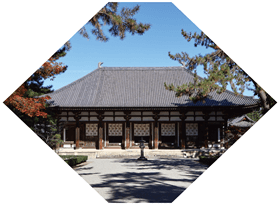
Toshodaiji Temple
Founded in 759 by Chinese priest Ganiin who succeeded in propagating Buddhism in Japan after overcoming several unsuccessful attempts to sail to Japan. Structures from the 8th century, remain to this day on the leafy premises.
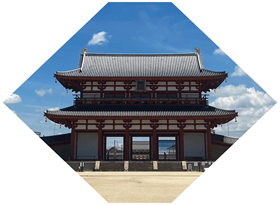
Nara Palace Site
The ruins of Heo Palace, which served as the center of Heo-kyo, the capital relocated from Fujiwara Palace in the year 710. The natural scenery, showcasing the changing seasons, is also a captivating aspect.






